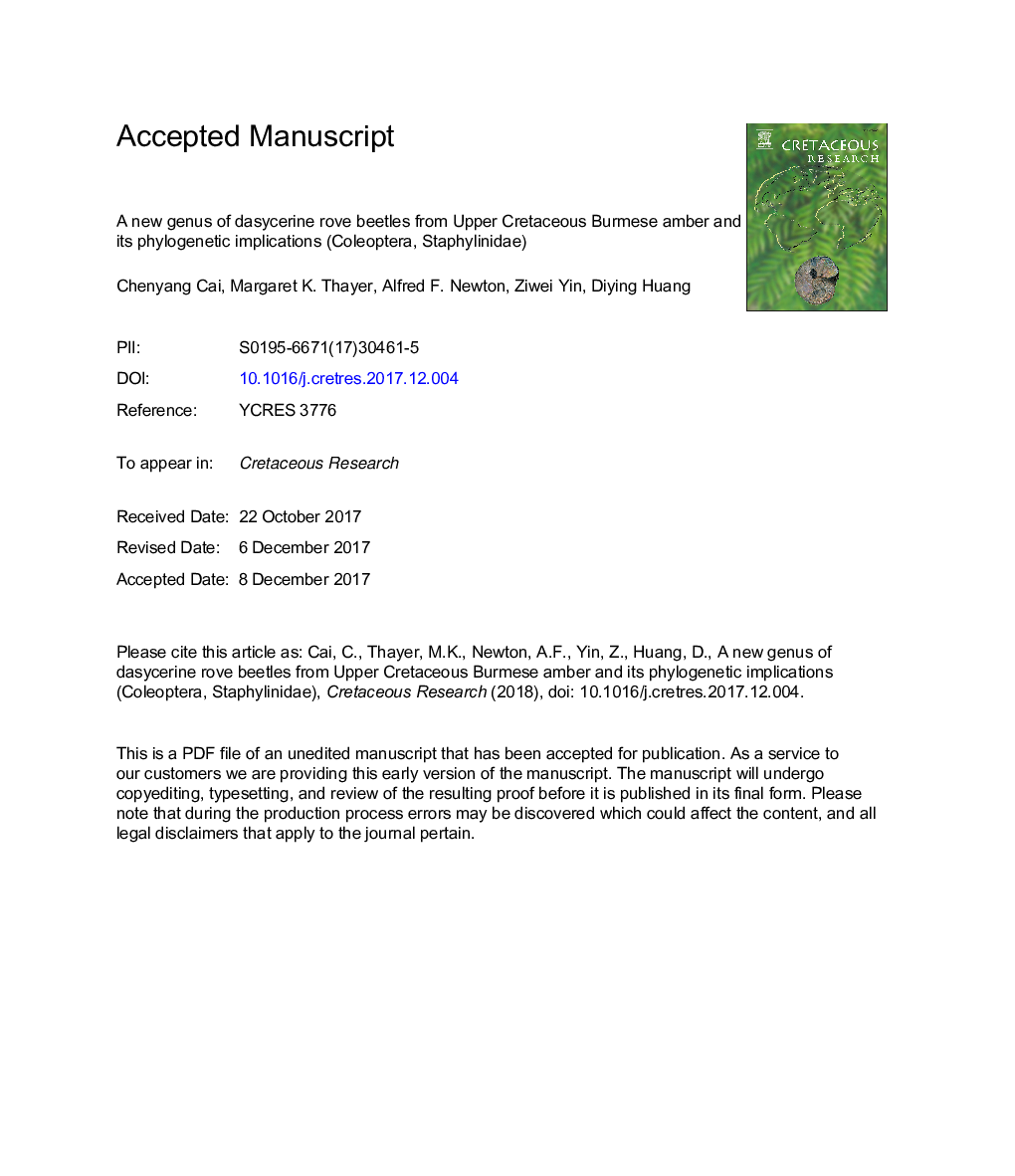| Article ID | Journal | Published Year | Pages | File Type |
|---|---|---|---|---|
| 8916397 | Cretaceous Research | 2018 | 20 Pages |
Abstract
The rove beetle subfamily Dasycerinae, having specialized latridiid-like body forms, are very distinctive among Staphylinidae. Fossil dasycerines are sparse, with only one species known from the Upper Cretaceous Burmese amber. Here we describe a new and more typical staphylinid-looking Dasycerinae genus and species, Vetudasycerus burmiticus gen. et sp. nov., from the Cretaceous Burmese amber (ca. 99Â Ma). It exhibits many defining features of the extant Dasycerinae (e.g., acuminate maxillary palpomere 4, verticillate and clubbed antennae, striate and carinate elytra, separated mesocoxae, and 3-segmented tarsi), but retains probably plesiomorphic traits, including short, comparatively compact antennae, greatly shortened elytra, and well-developed hind wings. The discovery reinforces the hypothesis that the Dasycerinae is a subfamily of Staphylinidae, closely related to Neophoninae, Protopselaphinae and Pselaphinae. It also highlights the palaeodiversity of the subfamily Dasycerinae in late Mesozoic.
Related Topics
Physical Sciences and Engineering
Earth and Planetary Sciences
Palaeontology
Authors
Chenyang Cai, Margaret K. Thayer, Alfred F. Newton, Ziwei Yin, Diying Huang,
